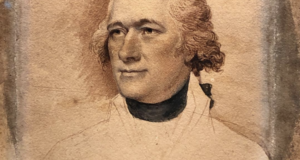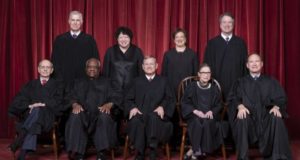The Supreme Court of Canada has repeatedly said that, in interpreting statutes, courts should undertake a unified textual, contextual and purposive approach. Under this approach “the words of an Act are to be read in their entire context and in their grammatical and ordinary sense harmoniously with the scheme of the Act, the object of the Act, and the intention of Parliament.” The Court first articulated this approach in Rizzo v. Rizzo Shoes, and has reiterated it in many subsequent decisions.
If we break down this approach into its constituent parts, we see there are five things the Supreme Court has said that courts must consider when interpreting a statute: 1) the grammatical and ordinary meaning of the words, 2) the textual context in which the words appear, 3) the scheme of the Act, 4) the object of the Act, and 5) the intention of Parliament or the provincial legislature. The first two speak to the text itself. The last three speak to what may broadly be called the “purpose” of the statute. The “scheme” of the Act refers to how the Act may generally be characterized (for example as “remedial” legislation). The “object” of the Act is its broad purpose. The “intention of Parliament” naturally refers to what the legislature intended. Legislative intent can be discerned from the text itself, but also from extra-textual sources such as legislative history. This seems to be what the Court is getting at since they have listed it separately from the words of the statute “read in their entire context.”
In this vein, it is worth noting that the word “harmoniously” separates the first two items from the remaining three. The courts are not simply supposed to examine the text in its full context to discern the legislative purpose; they are to examine the words in their full context together with the legislative purpose. The legislative purpose, in other words, is something separate and apart from the text that the legislature has enacted into law.
I have previously written about the problems inherent in the “purposive” approach. The first problem is philosophical. It is one thing to utilize legislative history or other non-textual sources as evidence of what the words of the statute mean. It is quite another to treat legislative history as an independent foundation for what the law is. A legislature is a non-corporeal body and so its “intent” can only be expressed through statutory enactments. The “intent” of any one legislator is just that – the intention of a particular human being. The rule of law demands that the people are governed by laws, not the will of other men or women. The celebrated philosopher, Baron de Montesquieu perhaps articulated it best in his book The Spirit of Laws (1748). “In despotic governments,” Montesquieu explained, “the judge himself is his own rule,” whereas “In republics, the very nature of the constitution requires the judges to follow the letter of the law.”
The second problem with the purposive approach is evidentiary: discerning a non-textual purpose can be difficult if not impossible. Legislation is often an exercise in compromise and there is often no truly unified intent or purpose. The overall “object” of the legislation rarely speaks to the specific provision at issue. The legislative history is often inconclusive and the courts have been known to rely upon academic articles that purport to know the “true” intent of the Act or provision. As a result of these ambiguities, judges are left with a great deal of discretion and latitude to find a “purpose” that accords with their own subjective policy preferences. Indeed, the “purposive” approach was widely utilized during the 15th and 16th centuries (known then as the “equity of the statute”), but it was effectively abandoned by the 19th century. As Australian judge Ashley Black has noted, the broad discretion it afforded to judges eventually came to be seen as incompatible with parliamentary supremacy.
Even if we can address the philosophical and evidentiary problems, a third problem arises in the context of the Rizzo formula, which may be called the doctrinal problem. How are the text and the purpose supposed to be read “harmoniously” with one another if they pull in different directions? We typically talk about harmonious readings in the context of two statutory provisions. It is a well-accepted canon of construction that provisions should be read harmoniously wherever possible. However, and crucially, we also have rules for what to do when a harmonious reading is impossible: where one provision is of a higher order than another (a constitutional provision vs. a statutory provision vs. a regulation), the higher provision trumps the lower one; where the provisions enjoy the same place on the legal hierarchy, the more specific provision overrides the more general one. Conversely, there is no rule for how to proceed when the text and purpose are in conflict. Which, in other words, should trump the other?
Let me offer an example that has arisen in my own private practice. Under Ontario’s Insurance Act, victims of motor vehicle accidents must apply for accident benefits from their own insurance company. They are only permitted to sue the at-fault driver for general damages and future health care expenses where they have sustained a “permanent serious impairment” of an important function. What is more, they are not permitted to sue for any income lost in the first 7 days after the accident, and are only entitled to recover 70% of their gross income loss thereafter. In 2011, this general scheme was amended by introducing the concept of “no crash, no cash.” Under s.268(1.1) of the Act, a person who is injured on a public transit vehicle is not entitled to claim accident benefits if the public transit vehicle did not “collide” with another vehicle or an object. The flip side is that under s.267.6(6.1), the “owner or driver of a public transit vehicle” cannot rely on the “threshold” or loss of income provisions of the Act. In other words, the accident is no longer treated as a motor vehicle accident – the plaintiff cannot obtain statutory accident benefits, but the owner/driver of the public transit vehicle is required to indemnify the plaintiff for her full loss, regardless of whether she suffered a permanent, serious impairment.
This seems straightforward. But let us imagine a scenario where a second vehicle cuts in front of a TTC bus, forcing the bus to brake suddenly. There is no impact, but the sudden braking causes one of the passengers to fall and strike his head. The passenger sues the owner/operator of the vehicle that cut in front of the bus. In this fact pattern there has been no “collision” pursuant to s.268(1.1) and so this passenger is not entitled to claim accident benefits. However, s.267.6(6.1) speaks only of the “owner or driver of the a public transit vehicle”; it does not mention any other potentially negligent parties. As such, the plaintiff would not be entitled to apply for accident benefits pursuant to s.268(1.1), but the owner/operator of the second vehicle could still rely upon the threshold and income loss provisions of the Act.
This result would undoubtedly strike many as unfair. It would deprive plaintiffs of the benefits of the “no fault” system, while saddling them with the same burdens (ie, the inability to recover fully in tort). A plaintiff who requires physiotherapy would not be able to turn to his own accident benefits insurer, but nor could he sue the at-fault driver for damages relating to medical care unless his injuries rose to the level of a “permanent serious impairment.”
To be sure, it is entirely plausible that the legislature intended to protect motorists from lawsuits to the greatest extent possible, even when this means dealing an injustice to an injured passenger aboard a public transit vehicle. It would certainly not be the first time the Ontario Legislative Assembly enacted a measure that benefits insurance companies to the detriment of injured plaintiffs. But let us suppose that we could demonstrate with relative certainty that the legislature would not have intended for injured plaintiffs to be deprived of accident benefits while still facing the burden of the tort threshold. Let us suppose that the legislature merely intended to remove public transit slip and falls from the motor vehicle accident regime; that, in other words, it simply neglected to account for situations like the one described above. What then? How would we reconcile the ordinary meaning of the words taken in their entire statutory context with this conflicting legislative intent? The Supreme Court’s approach in Rizzo offers no guidance.
When these issues arise – and they are bound to arise from time to time – they force us to make a choice between the text and the apparent purpose. For the reasons outlined above, I would fall squarely on the textual side of the fence. We cannot know with any certainty the “true” purpose or intent behind these provisions. What we do know is that, in the case of the “no crash, no cash” provisions, the text is clear and unambiguous. To the extent the law as written does not fairly capture the legislative intent, the legislature is at liberty to amend it. Until that occurs, however, the best evidence of “legislative intent” is what the legislature has enacted into law. The only way to read the text harmoniously with the extra-textual purpose is to treat the former as being superior to the latter. Legislative history and other non-textual sources may provide compelling evidence of textual meaning where the text is ambiguous, but these sources must always be utilized in service of textual meaning, not the other way around.
 Advocates for the Rule of Law
Advocates for the Rule of Law




I agree that there are problems with the “purposive” approach. First of all, the Supreme Court has frequently referred to it as “broad”, which dates back at least to Hunter v. Southam in 1984. However the reality is that a purposive approach narrows the scope of the individual right in question.
Consider this paragraph from Irwin Toy in 1989:
“We have already discussed the nature of the principles and values underlying the vigilant protection of free expression in a society such as ours. They were also discussed by the Court in Ford (at pp. 765-67), and can be summarized as follows: (1) seeking and attaining the truth is an inherently good activity; (2) participation in social and political decision-making is to be fostered and encouraged; and (3) the diversity in forms of individual self-fulfillment and human flourishing ought to be cultivated in an essentially tolerant, indeed welcoming, environment not only for the sake of those who convey a meaning, but also for the sake of those to whom it is conveyed. In showing that the effect of the government’s action was to restrict her free expression, a plaintiff must demonstrate that her activity promotes at least one of these principles.”
A plaintiff should have to demonstrate no such thing. Rather, the government should have to demonstrate that her expression is excluded from protection for one of the standard reasons: it contains threats of violence, it is slanderous, or it breaches a court order, for example. Admittedly the third principle listed is very wide, but there are plenty of everyday activities that arguably lie outside of it, like commenting negatively on another’s appearance or intelligence. The attempt to find “purpose” in the freedom of expression guarantee could lead to a diminution of the rights of a person before the court. The “vigilant” protection is anything but.
Second, it can lead to opposite results from judging essentially identical pieces of legislation. Compare Big M Drug Mart in 1985 with Edwards Books et al in 1986. Both involved Sunday shopping, but in the first case the store was acquitted because the “purpose” of the legislation was religious, while in the second it was convicted because the “purpose” was secular. This is an untenable result. Either the government should be able to impose such regulations or it should not.